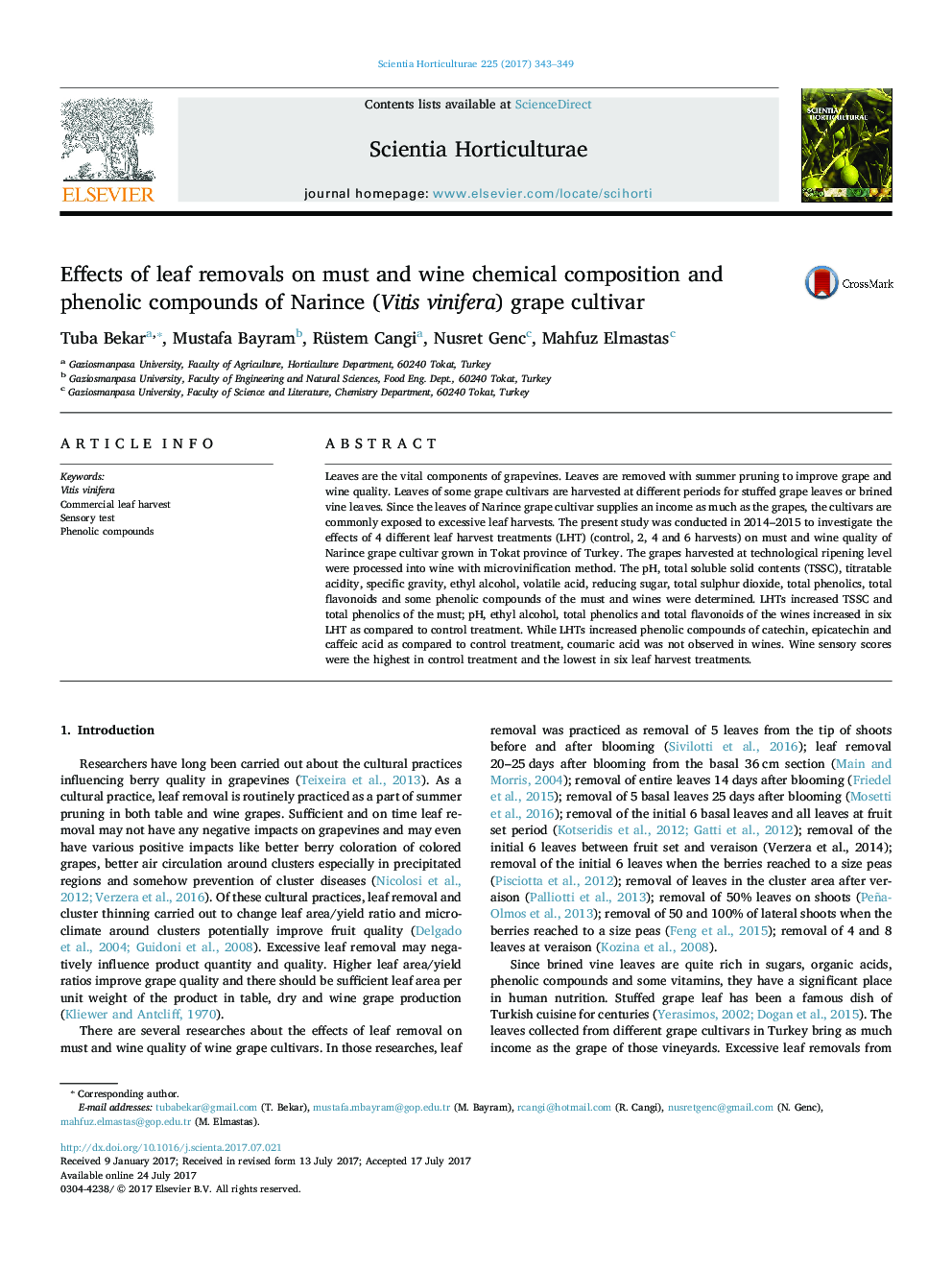| Article ID | Journal | Published Year | Pages | File Type |
|---|---|---|---|---|
| 5769275 | Scientia Horticulturae | 2017 | 7 Pages |
â¢Leaf harvest applications increased total soluble solid contents (TSSC), density, total phenolic compounds and total flavonoid in must.â¢In six leaf harvest application, ethyl alcohol, total phenolic compounds and total flavonoid in produced wine increased compared to the control.â¢Leaf harvest applications increased catechin, epicatechin and caffeic acid from phenolic compounds as compared to control application.â¢Sensory evaluations revealed that leaf harvest applications reduced wine quality.â¢Under the light of findings, two period harvests are suggested if the brine leaf collection practices were aimed to be applied, in order to produce quality wine from Narince cultivar.
Leaves are the vital components of grapevines. Leaves are removed with summer pruning to improve grape and wine quality. Leaves of some grape cultivars are harvested at different periods for stuffed grape leaves or brined vine leaves. Since the leaves of Narince grape cultivar supplies an income as much as the grapes, the cultivars are commonly exposed to excessive leaf harvests. The present study was conducted in 2014-2015 to investigate the effects of 4 different leaf harvest treatments (LHT) (control, 2, 4 and 6 harvests) on must and wine quality of Narince grape cultivar grown in Tokat province of Turkey. The grapes harvested at technological ripening level were processed into wine with microvinification method. The pH, total soluble solid contents (TSSC), titratable acidity, specific gravity, ethyl alcohol, volatile acid, reducing sugar, total sulphur dioxide, total phenolics, total flavonoids and some phenolic compounds of the must and wines were determined. LHTs increased TSSC and total phenolics of the must; pH, ethyl alcohol, total phenolics and total flavonoids of the wines increased in six LHT as compared to control treatment. While LHTs increased phenolic compounds of catechin, epicatechin and caffeic acid as compared to control treatment, coumaric acid was not observed in wines. Wine sensory scores were the highest in control treatment and the lowest in six leaf harvest treatments.
Graphical abstractDownload high-res image (199KB)Download full-size image
